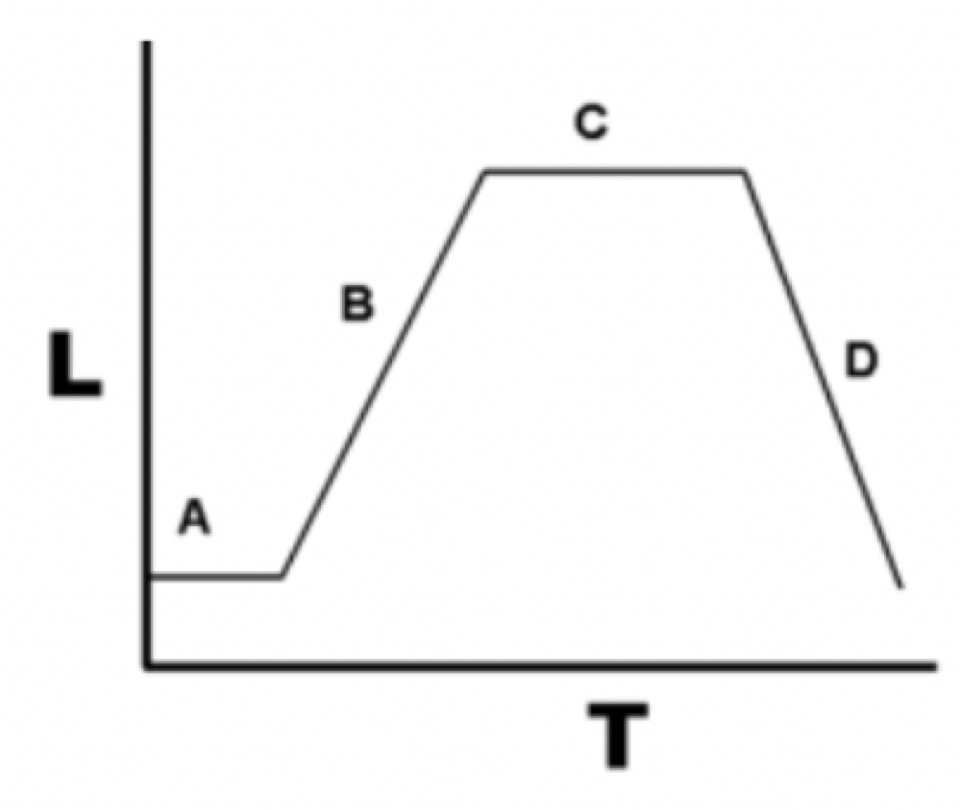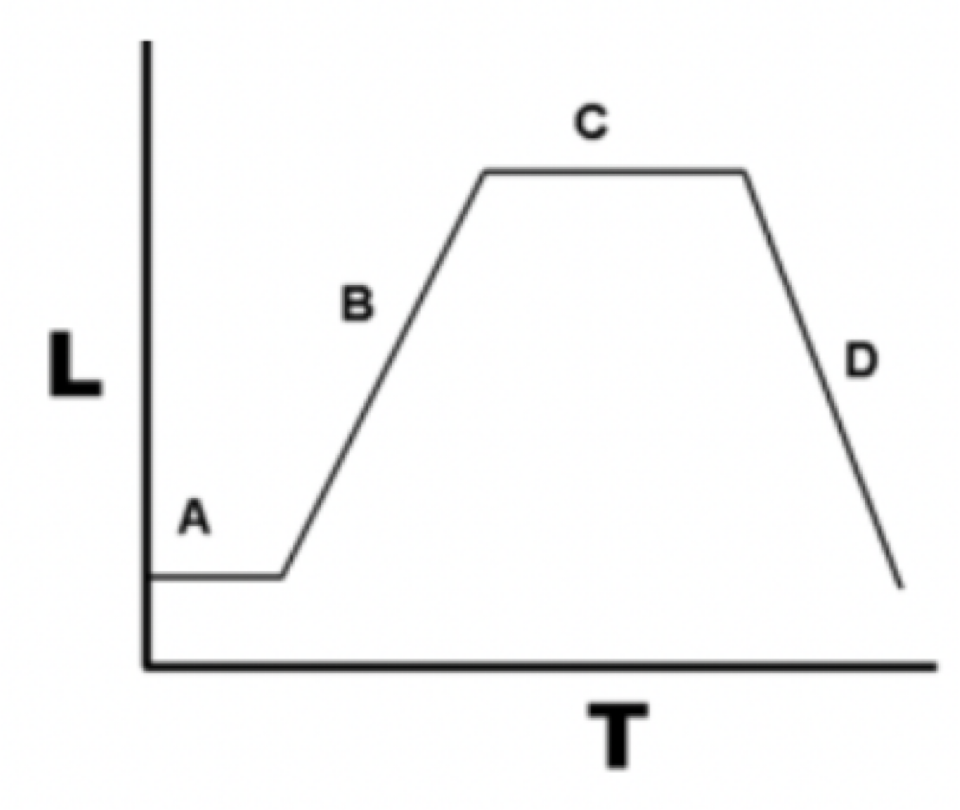Microbio Lab Quiz (4.1 and 4.2)
1/44
There's no tags or description
Looks like no tags are added yet.
Name | Mastery | Learn | Test | Matching | Spaced |
|---|
No study sessions yet.
45 Terms
Generation time
the time it takes for the bacteria population to double
“one cell into two”
genetically determined
influenced by nutritional and environmental factors
Lag phase
bacterial cells are metabolically active
lag phase (image)
What is A?

Log phase
cells are producing at en exponential rate
number of cells doubles every generation time
log phase (image)
What is B?

Stationary Phase
rate of cell reproduction is equal to the rate of cells dying
Stationary phase (image)
What is C?

Death Phase
cells dying off at exponential rate
Death Phase (image)
What is D?

Bacterial growth
increase in the number of cells
Qualitative
what organism is growing
Quantitative
how many bacterial cells are present
Spectrophotometer
used to determine the amount of bacterial cells present in a liquid sample
measure turbidity
absorption
how much light is absorbed by the specimen
greater absorption = higher cell count
lower absorption = lower cell count
transmittance
how much light passes through the sample
greater transmittance = lower cell count
lower absorption = higher cell count
aerobic cellular respiration
metabolism that utilizes oxygen to create energy in the form of ATP
anaerobic respiration/ fermentation
metabolism that does not utilize oxygen to create ATP
aerobe
organisms that require oxygen for cellular respiration
contain enzymes that process toxic oxygen metabolites
obligate aerobes
an organism that cannot grow without oxygen and needs oxygen at atmospheric levels
microaerophiles
an organism that uses oxygen for cellular respiration, but at a concentration lower than in the atmosphere
require oxygen in small amounts
anaerobe
organisms that do not use oxygen for cellular respiration
obligate anaerobes
do not use oxygen for cellular respiration and cannot grow in the presence of oxygen
aerotolerant anaerobes
do not use oxygen for respiration, but can grow if oxygen is present
facultative anaerobes
can grow with or without oxygen
can switch between aerobic and anaerobic respiration to grow
obligate aerobe
obligate anaerobe
microaerophile
facultative anaerobe
Oxygen Requirements for anaerobes/ aerobes

Capnophiles
bacteria that require an increased carbon dioxide environment
species of bacterial capnophiles:
haemophilus influenzae
different methods that allow for anaerobic or capnophile growth
gasPak jars
specialized media
diplococcus
two round shaped bacteria
streptococcus
chain of round shaped bacteria
tetrad
a group of four round shaped bacteria
staphylococcus
grape like clusters of round shaped bacteria
sarcina
cubical packets of eight round shaped bacteria
random
singles or no specific arrangement of round shaped bacteria
diplobacillus
pair of rod shaped bacteria
streptobacillus
chain of rod shaped bacteria
random
singles or no specific arrangement of rod shaped bacteria
coccobacillus
bacteria that are partially circular shaped and partially rod shaped
vibro
one-half spiral turn (C-shaped)
spirillum or spirochete
loosely or tightly wound spiral
no specific arrangement
test used to detect the presence of the enzyme Catalase
useful in distinguishing gram positive cocci
differentiate between staphylococci (positive = bubble) and streptococci (negative = no bubbles)
hydrogen peroxide (H2O2) forms as a by-product of aerobic metabolism
H2O2 is toxic to cells
the enzyme catalase breaks down H2O2 in water and oxygen
2 H2O2 ——catalase——→ 2 H2O + O2
Catalase Test
calase positive
staphylococcus
micrococcus
test used to detect the presence of the enzyme Cytochrome C Oxidase for cellular respiration
differentiating gram negative bacilli
Cytochrome c oxidase is the final enzyme used in the electron transport chain
Oxidase reagent:
reacts with cytochrome c oxidase turns purple
chromogenic reducing agent: chemical that develops color as it is oxidized
Oxidase Test
Oxidase Positive
Pseudomononadaceae
Neisseria
Spectrophotometer

catalase negative
enterococcus
streptococcus
Oxidase Negative
Enterobacteriaceae
Escherichia coli
Serratia marcescens